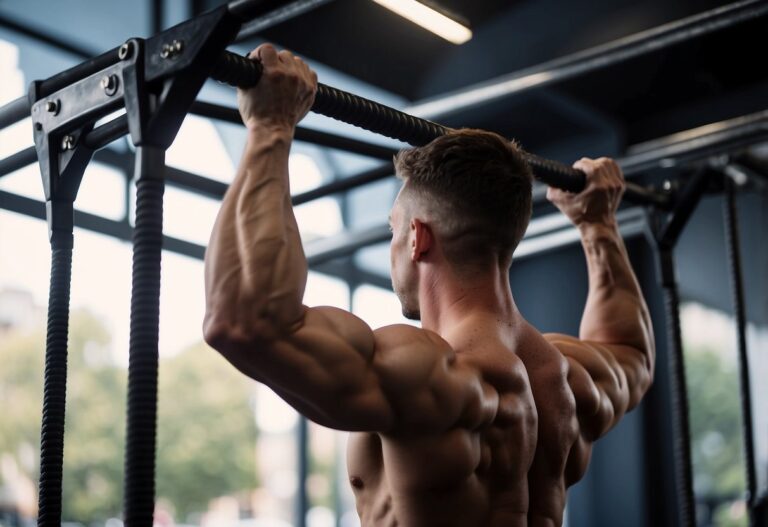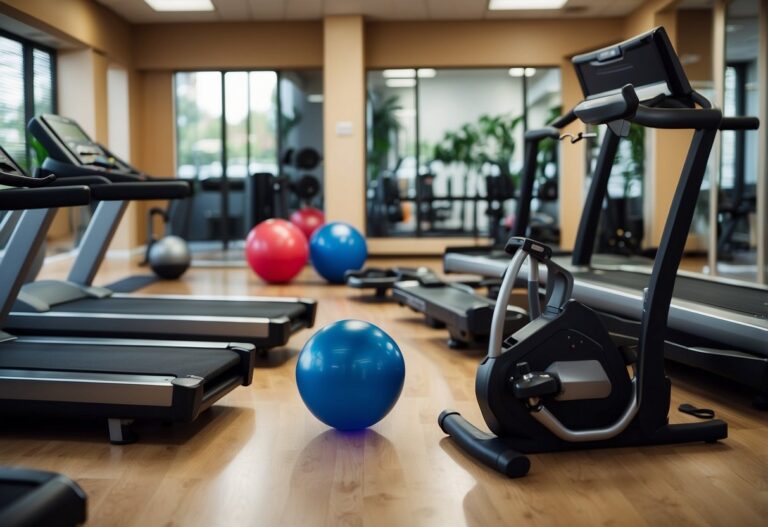The ketogenic diet has grown in popularity, especially among those looking to lose weight or improve their health. But what happens when you combine it with regular exercise? This article will cover essential tips for those who want to maintain an active lifestyle while following a keto diet.

Is it possible to keep up with your workouts while cutting most of the carbs from your diet? Absolutely! By making a few adjustments and understanding how your body reacts to a low-carb diet, you can continue to enjoy your exercise routine and maybe even see better results. Whether you’re new to the keto diet or a seasoned pro, these tips can help you strike the right balance between diet and fitness.
Low-carb Vegetables
Eating low-carb vegetables is great for your keto diet. These veggies are packed with nutrients and low in carbs, making them perfect for staying within your daily carb limits.
You’ve got plenty of options. Spinach and kale are tasty and provide lots of vitamins. Another favourite is broccoli, which is great whether you steam, roast or even stir-fry it.
Courgettes (zucchini) are super versatile. You can make courgette noodles as a pasta substitute. Bell peppers add crunch and colour to your meals. Just be mindful of their carb content, especially the red and yellow ones. They can add up.
Cauliflower is another keto superstar. You can use it to make low-carb rice or even mash it as a potato substitute. It’s quite filling and satisfying.
Eating asparagus is another delicious choice. It pairs well with many dishes and is easy to cook. Same goes for cucumbers—refreshing and hydrating, perfect for salads.
Remember, incorporating these low-carb veggies into your meals can help you stick to your keto diet while enjoying a variety of tasty foods. Add some of these to your shopping list and get creative in the kitchen!
High-protein snacks
When you’re on a keto diet and working out, finding the right snacks can make a big difference. One great option is beef jerky. It’s tasty, portable, and packed with protein. Just make sure it’s low in sugar.
Another easy, high-protein snack is sardines. These little fish are loaded with omega-3 fatty acids, which are good for your heart and provide a protein boost.
You might also like gouda cheese. A small piece is both rich in flavour and filling. Plus, it’s perfect for quick snacks throughout the day.
Lastly, walnuts are a fantastic choice. They are brain food with their high omega-3 content and offer a nice crunch while keeping your protein levels up.
Intermittent Fasting
Intermittent fasting (IF) is a popular way to manage weight and improve metabolic health. It involves cycling between eating and fasting periods. Common methods include the 16/8 method, where you fast for 16 hours and eat during an 8-hour window, or the 5:2 approach, where you eat normally for five days and restrict calories for two.
When you start intermittent fasting, it’s crucial to stay hydrated. Drinking water regularly during fasting periods helps maintain your energy levels and keeps hunger at bay.
Combining intermittent fasting with a keto diet can make the transition smoother due to the energy density of keto foods. It can reduce meal frequency comfortably and keep you feeling full longer.
It’s important to listen to your body and adjust your workout routine accordingly. A low-intensity workout might be more suitable when you’re fasting because high-intensity workouts can be too demanding on an empty stomach.
Experiment with different fasting schedules to find what works best for you. The key is to find a balance that fits your lifestyle and exercise routine while still achieving your health goals.
Weightlifting
When you’re on a keto diet, weightlifting can seem tricky. Your body uses fat for energy instead of carbs, which can be a big change.
Start with progressive overload. This means you should gradually increase the weights you lift. It helps build strength and muscle over time.
It’s important to get enough protein. Foods like eggs, chicken, beef, and fish are great. They provide amino acids needed for muscle repair and growth.
Consider eating simple carbs before your workout. This gives you the energy boost you need. Think of something like a small piece of fruit.
Remember to rest. Quality sleep and recovery are key for muscle growth. Aim for at least seven hours of sleep each night.
Even on a keto diet, you can still make gains in the gym. Be smart about your nutrition and training routine.
Circuit Training

Circuit training is a versatile workout that combines different exercises. This method keeps your heart rate up and muscles engaged.
When doing circuit training on keto, it’s important to listen to your body. You may find you have less quick energy, so start slow.
Aim for low-impact exercises initially. Things like push-ups, squats, and planks can be effective.
Incorporate short rest periods. Resting for 30 seconds between exercises can help maintain balance and energy.
Hydration Tips
Staying hydrated is critical when you’re on a keto diet and working out. You might need more water than usual. Aim to drink at least eight to ten cups a day, especially if you’re active or in a hot climate.
Your body loses more electrolytes on keto. Electrolytes like sodium, potassium, and magnesium are essential. Consider adding a pinch of salt to your water or consuming keto-friendly electrolyte supplements.
Listen to your body. Thirst, dizziness, or fatigue often signal that you need more hydration. Make sure you drink before, during, and after your workouts. Keeping a water bottle handy can help you stay on track.
Avoiding Processed Foods

When you’re on a keto diet, it’s crucial to stay away from processed foods. They often contain hidden sugars and unhealthy fats that can kick you out of ketosis.
Stick to Whole Foods: Choose fresh vegetables, meat, and fish. Avoid pre-packaged snacks and meals. These often have additives and preservatives that are not keto-friendly.
Read Labels: Always check the ingredient list. Even items marketed as “low-carb” can have unwanted ingredients. Look for added sugars or trans fats—these are red flags.
You might find it challenging at first. Think of preparing meals at home instead of relying on ready-made options. This way, you control exactly what goes into your food and avoid any hidden carbs.
Electrolyte Balance
Maintaining proper electrolyte balance is key when you’re on a ketogenic diet, especially if you work out regularly. Electrolytes like sodium, potassium, and magnesium help with hydration, muscle function, and nerve signalling.
You need to stay hydrated. Drink plenty of water and consider adding a pinch of salt to your fluids to retain the water better.
Include electrolyte-rich foods in your diet. Avocados, nuts, and leafy greens are excellent sources that can help you maintain balance.
Using supplements can also be beneficial. Magnesium supplements are particularly helpful for muscle cramps and improving sleep quality.
Resistance Bands
Using resistance bands can be a great addition to your workouts. They are light, portable, and very effective.
Start by wrapping the band around your feet and shoulders. Perform a squat by pushing your hips back while keeping your chest up. This classic move targets your legs and core.
Another simple exercise is the banded bridge. Wrap the band around your thighs, lie on your back, and raise your hips. This targets your glutes and hamstrings effectively.
Lastly, try the banded dead bug. With the band around your feet, perform a controlled leg and arm movement while lying down. This strengthens your core muscles.
These exercises are easy to perform and can significantly enhance your strength while on the keto diet. By integrating resistance bands, you can maximise your fitness goals.
Healthy fats
Healthy fats are a key part of the keto diet, helping to provide energy for your workouts. Avocado, for instance, is a great option. It’s rich in monounsaturated fats and offers a creamy texture that’s easy to add to many dishes.
Nuts and seeds are also excellent choices. Chia seeds, with their high omega-3 content, are perfect for your diet. Just one tablespoon packs around 4 grams of fat. Similarly, incorporating MCT oil can benefit you by offering quick energy.
Full-fat dairy like heavy cream and yogurt can also be included in your diet. These foods help make other keto ingredients taste great, especially in smoothies.
Remember, your body needs these fats to perform well, especially during exercise. Opting for these healthy fats can boost your energy and help you achieve your fitness goals. You can find more details about these fats here.
Benefits Of Combining Keto And Workouts
Combining a keto diet with regular workouts can help you burn fat more effectively and boost your energy. This section covers the main benefits you can expect when pairing keto with exercise.
Enhanced Fat Burning
When you follow a keto diet, your body enters a state known as ketosis. In ketosis, your body uses fat as its primary energy source instead of carbs. This means that by combining keto with workouts, your body can burn more of the stored fat.
For instance, doing cardio exercises in ketosis can help you shed pounds faster. Studies show that people on a keto diet efficiently use stored fat for energy, which is ideal for weight loss. Additionally, weight training while on keto can help tone muscles without adding too much bulk.
One practical tip is to include some form of physical activity daily. You might go for a brisk walk, a jog, or even some simple home workouts. This consistency helps your body stay in a fat-burning mode all the time.
Increased Energy Levels
Another key benefit is the increase in consistent energy levels. Instead of relying on the short bursts of energy from carbs, your body taps into fat stores for a steadier supply.
This can make a difference in how you feel throughout the day. Expert tips recommend consuming healthy fats before your workout. This helps maintain your energy levels without the crash you might experience from high-carb snacks.
Many people report feeling more energetic and less fatigued during their workouts. This is because fat is a more reliable energy source than carbs, which can lead to energy slumps. Proper hydration and electrolyte intake are also important to keep your energy levels stable. Try drinking water with added electrolytes before and after your workouts to stay hydrated and energised.
By focusing on these benefits, you can make the most out of your keto diet and exercise routine.
Best Workouts For A Keto Diet
Engaging in workouts while on a keto diet can help enhance fat loss and improve overall fitness. Different types of exercises work well depending on the intensity and goals.
Low-Intensity Steady-State (LISS) Cardio
LISS cardio involves exercises like walking, cycling, or swimming at a steady, moderate pace. This type of exercise is great for burning fat efficiently while maintaining low levels of glucose in your body.
One benefit of LISS is that it’s less intense, making it easier to sustain for extended periods. For those on a keto diet, it helps in burning fat for fuel without depleting energy levels quickly.
Consistent LISS workouts can also aid in improving cardiovascular health and endurance. Consider integrating activities like brisk walking or light jogging into your routine. Try to aim for 30 to 60 minutes per session for optimal benefits.
High-Intensity Interval Training (HIIT)
HIIT involves short, intense bursts of activity followed by brief rest periods. This workout is effective for burning a substantial number of calories in a short time, making it ideal for weight loss.
One advantage of HIIT is its ability to increase your metabolism even after the workout. For those on a keto diet, it can help boost fat oxidation and improve insulin sensitivity.
Incorporate exercises like sprinting, cycling, or bodyweight exercises like burpees and jump squats to keep your heart rate elevated. Typically, a HIIT session lasts around 20 to 30 minutes, but the intensity ensures you get a thorough workout in a shorter period.
Choose workouts that match your fitness level and gradually increase the intensity to avoid burnout.
Tips For Success On Keto With Exercise
Embarking on a keto diet while maintaining an exercise routine can be challenging but rewarding. It’s crucial to ensure you are hydrated and have your macronutrients adjusted correctly for optimal performance and results.
Stay Hydrated
When you follow a keto diet, your body excretes more water, increasing the risk of dehydration. Stay well-hydrated by drinking plenty of water throughout the day. Aim to drink at least 8-10 glasses of water daily, especially before, during, and after workouts.
Electrolyte balance is also essential. Consider adding electrolyte supplements or consuming foods rich in sodium, potassium, and magnesium. This balance prevents cramps and fatigue. For example, avocados and dark leafy greens can provide these necessary nutrients.
Don’t rely solely on thirst to gauge your hydration needs. Instead, monitor the colour of your urine; a light yellow indicates proper hydration, while darker shades suggest you need more fluids. Carry a water bottle with you to ensure you drink regularly.
Adjust Your Macros
On keto, carefully balancing your macronutrients is key to sustaining energy levels during workouts. Your diet should consist of 70-75% fats, 20-25% proteins, and 5% carbs. This helps maintain ketosis, where your body burns fat for fuel.
Before intense workouts, consume a small, high-fat snack such as nuts or cheese. This provides instant energy and helps with endurance. Post-exercise, focus on replenishing your body with protein and healthy fats to aid muscle recovery.
Monitor your body’s response and adjust your macros if needed. If you feel sluggish or weak, slightly increasing your protein intake can help. Listen to your body’s signals and tweak your diet to find what works best for you. Keeping a food diary can assist in tracking what improves your performance.







